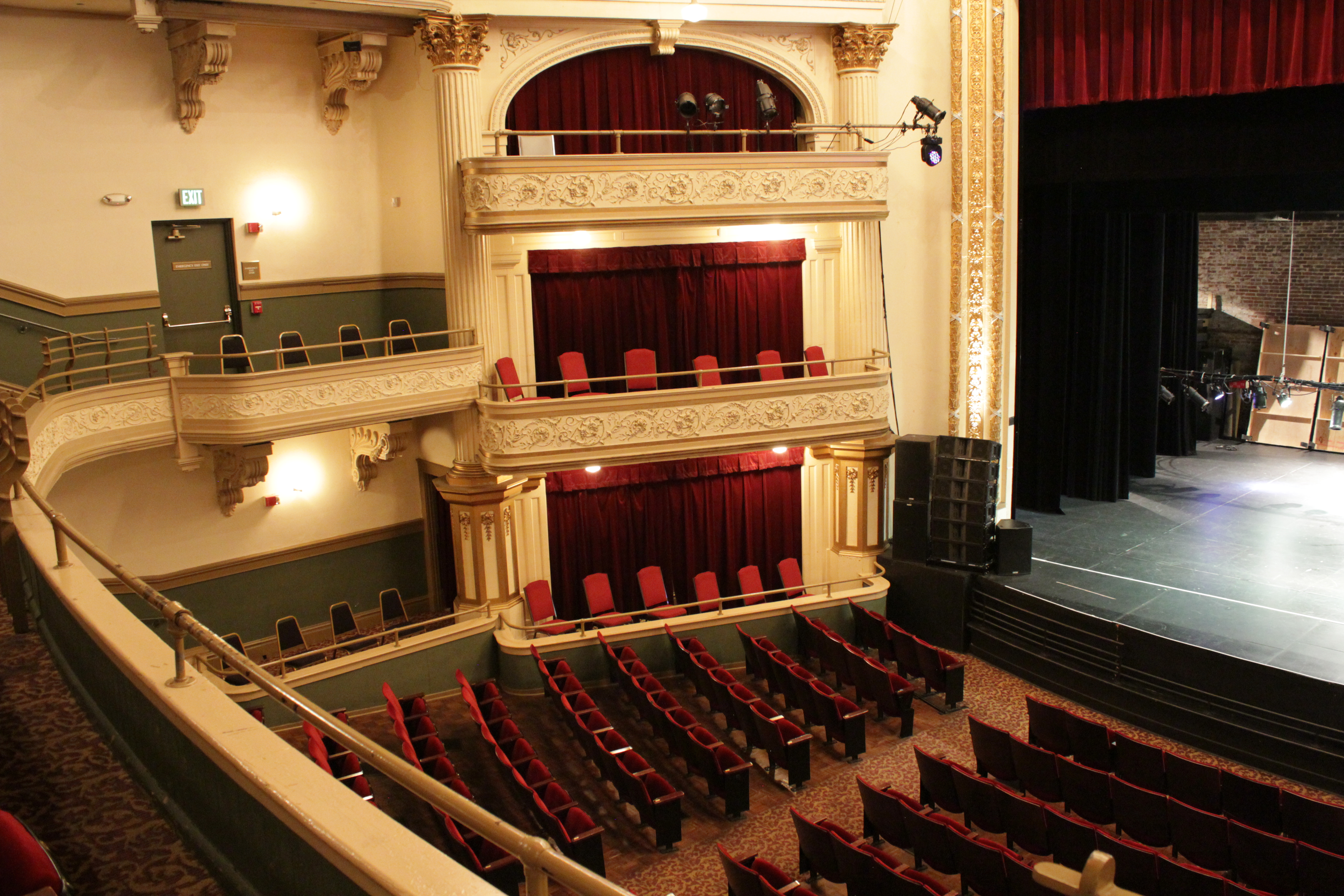

There are two loggia levels and three box levels on each side of the building. The theater has a capacity of approximately 700, with two balcony levels. The grading of the street during this period exposed the hotel's cellar, which was subsequently converted into the main entrance. Many of these alterations resulted from the macadamizing of Gay Street in 1854. The building's facade was probably designed in the Georgian style, but its original appearance was extensively altered in the 1850s. From the foyer, the rear entrance opens into a bar, with passageways to the left and right leading to the theater's orchestra floor, and stairways to the left and right accessing the theater's balconies and the original building's second floor (now offices for the theater). The main entrance opens into a foyer, from which the rear theater section and the building's front corner wings are accessed (the south corner wing is occupied by a restaurant, The Bistro). The Bijou Theatre building consists of two parts- the original hotel section, completed in 1817, and the rear theater section, built in 1909.

The Bijou orchestra floor, boxes, and stage, viewed from the upper right loggia After a period of decline in the 1960s and early 1970s, local preservationists purchased the building and renovated the theater. The theater opened on March 8, 1909, and over the next four decades would host performers such as the Marx Brothers, Dizzy Gillespie, John Philip Sousa, the Ballets Russes, Ethel Barrymore, Alfred Lunt and Lynn Fontanne, John Cullum, and Houdini. In 1909, the rear wing of the building was replaced by the Bijou Theatre structure, entered through a new lobby cut through the hotel building from Gay Street. Following the war, the hotel became the center of Knoxville's Gilded Age extravagance, hosting lavish masquerade balls for the city's elite. During the Civil War, the Union Army used the hotel as a hospital for its war wounded, among them General William P. In 1819, Andrew Jackson became the first of five presidents to lodge at the hotel, and in the early 1850s, local businessmen purchased and expanded the building into a lavish 75-room complex. The Lamar House Hotel was built by Irish immigrant Thomas Humes (1767–1816) and his descendants, and quickly developed into a gathering place for Knoxville's wealthy. The building and theater were added to the National Register of Historic Places in 1975.

The Lamar House Hotel, in which the theater was constructed, was originally built in 1817, and modified in the 1850s.
#Bijou theatre movie
Built in 1909 as an addition to the Lamar House Hotel, the theater has at various times served as performance venue for traditional theatre, vaudeville, a second-run moviehouse, a commencement stage for the city's African-American high school, and a pornographic movie theater. The Bijou Theatre is a theater located in Knoxville, Tennessee, United States.


 0 kommentar(er)
0 kommentar(er)
